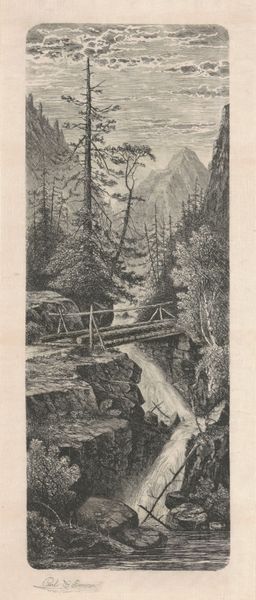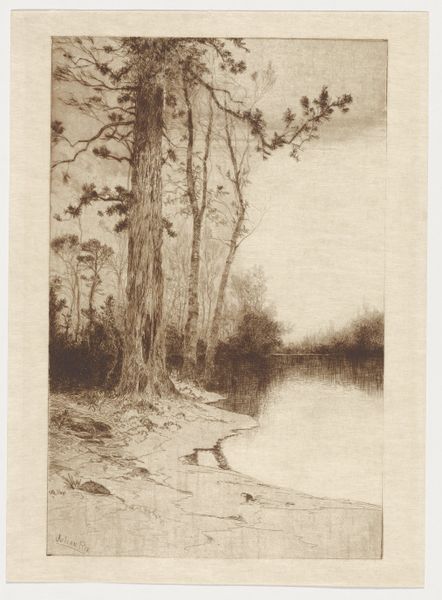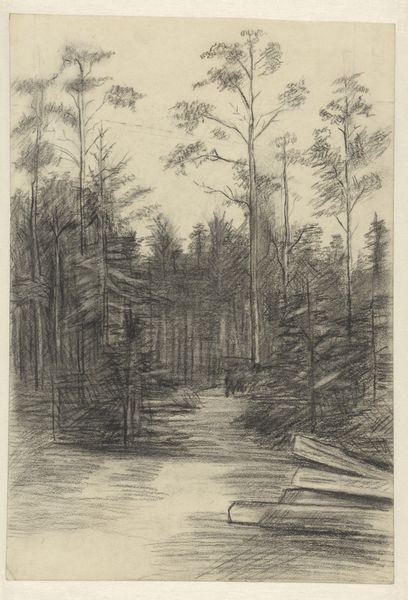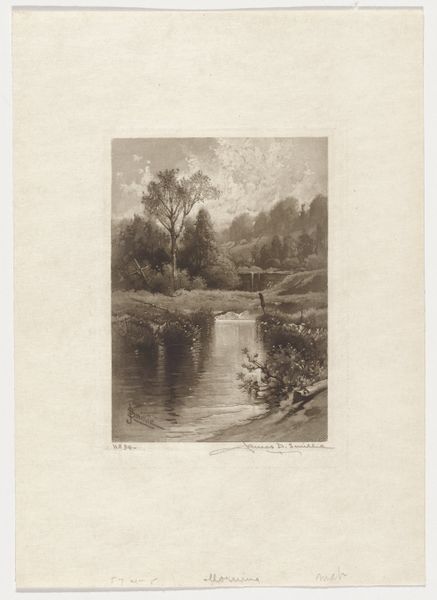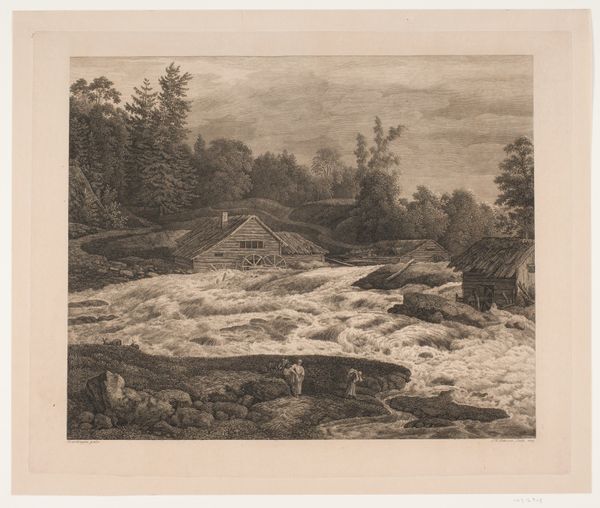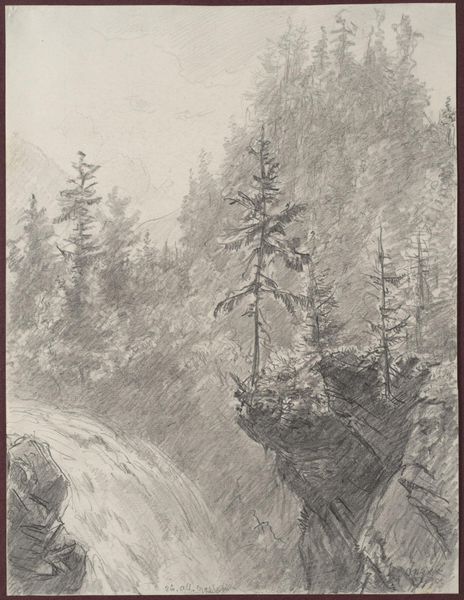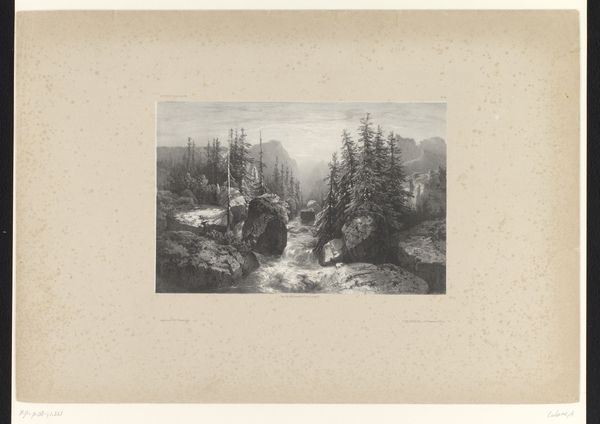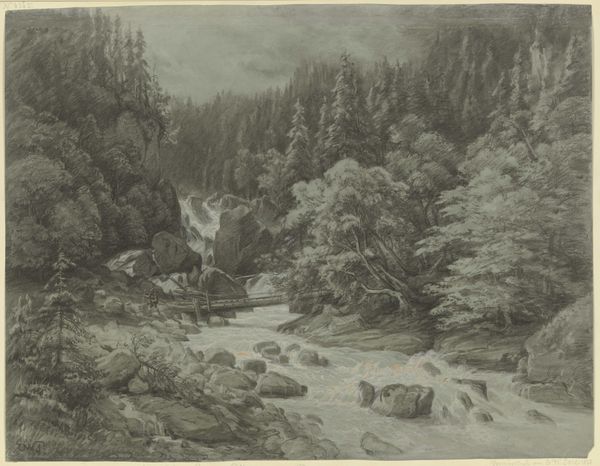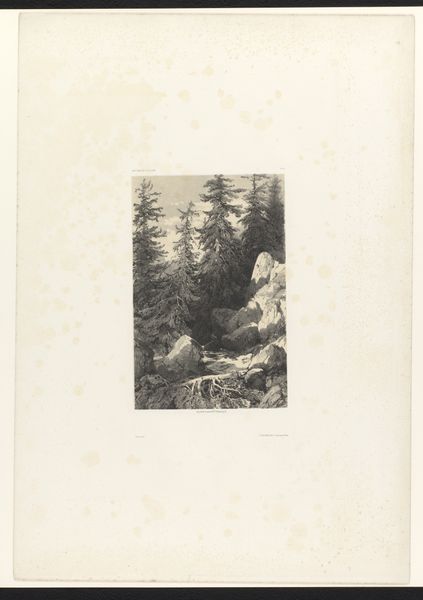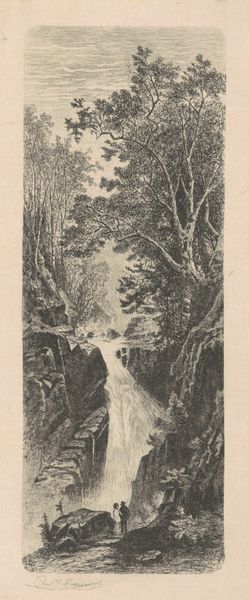
Dimensions: 10 7/16 x 6 3/4 in. (26.51 x 17.15 cm) (plate)12 7/16 x 9 5/16 in. (31.59 x 23.65 cm) (sheet)
Copyright: Public Domain
Editor: This is James Fagan's "Headwaters of the Sacramento," an engraving from 1888 housed here at the Minneapolis Institute of Art. The monochromatic tones give the print a serene, almost dreamlike quality, despite the realism in the details. What structural elements do you observe that guide your interpretation of the work? Curator: The composition is rigorously organized by the artist, is it not? Note the vertical thrust of the trees mirrored by the distant mountain peaks, framing the horizontal cascade of the water. Fagan establishes a compelling tension through this strategic balancing act. The figures, while small, punctuate this constructed balance. How does the surface texture influence your understanding? Editor: Well, the intricate detail achieved through engraving gives the work a tactile quality, even in reproduction. The cross-hatching, for example, creates an impression of depth and movement in the water, giving the illusion that the river is alive with turbulent power. Curator: Precisely! The manipulation of light and shadow through varied line work imbues the scene with dynamism. One must recognize, however, that the formal order established through composition neutralizes any implied turbulence, yielding an uncanny placidity. Editor: I see what you mean. The balance of movement and stillness creates a captivating juxtaposition. I never thought of it that way. It is fascinating how analyzing the formal elements unlocks deeper meaning. Curator: Indeed. Art resides within a nexus of interdependent aesthetic choices; apprehending that order enhances our understanding of not only the image, but the system that underpins all artistic creation.
Comments
No comments
Be the first to comment and join the conversation on the ultimate creative platform.
